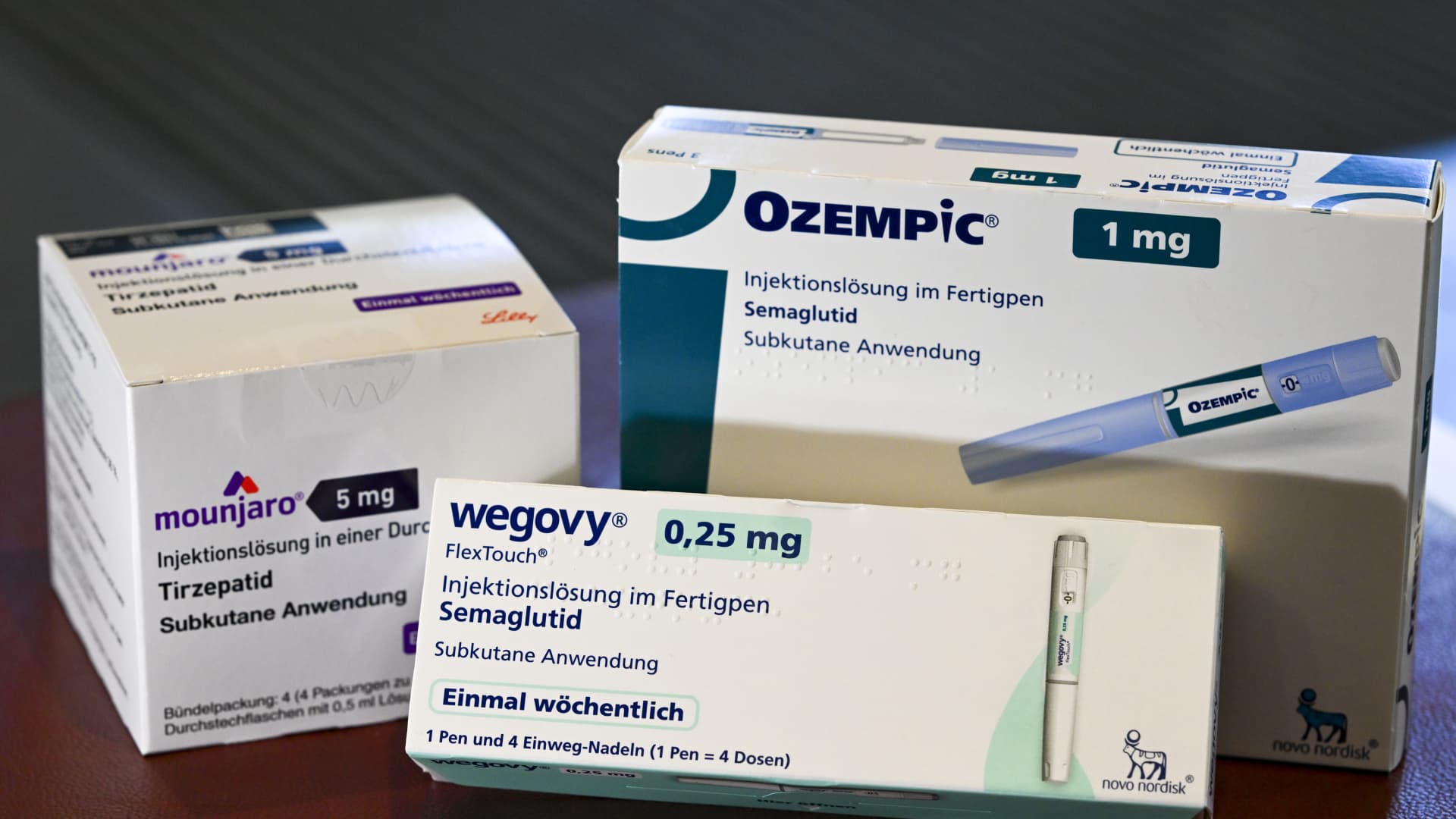Much attention has been paid lately to a corner of the oncology market called radiopharmaceuticals. The therapy seeks to destroy cancer cells by attaching a radioactive particle to a specific molecule and then sending it directly to the tumor. There are currently two Novartis products on the market and a number of clinical trials underway. Interest is so high that over the past year it has been at the center of an avalanche of acquisition announcements by Big Pharma. The latest came from Novartis earlier this month when it struck a deal to buy Mariana Oncology for $1 billion. Novartis already has two therapies on the market: Pluvicto, which treats a type of advanced prostate cancer, and Lutathera, which targets neuroendocrine tumors. Eli Lilly completed its $1.4 billion acquisition of Point Biopharma in December, and in February, Bristol-Myers Squibb completed its $4.1 billion acquisition of RayzeBio. Then in March, AstraZeneca said it plans to buy clinical-stage biopharmaceutical company Fusion Pharmaceuticals for $2.4 billion. “Any big pharma with an oncology presence probably wants to get into this radiopharmaceuticals game because the data already looks pretty good,” said Jefferies analyst Andrew Tsai. “What you are seeing is that these companies [are] Not necessarily acquiring the main asset of these companies, but rather the manufacturing, the know-how. It seems very complicated to do it yourself,” he added. An opportunity for growth in the next decade Still, radiopharmacy is just one part of each company's broader portfolio. Novartis is a leader in this space with its two therapies already in production. market and several “The acquisition of Mariana…gives them even greater discovery capabilities,” said Oppenheimer analyst Jeff Jones. But Novartis shares have underperformed the market. about 8% based on the average price target, FactSet reported. Investor attention is on Eli Lilly, which is up 38% so far this year, largely thanks to its Mounjaro diabetes drug and treatment. Zepbound weight loss Shares of Bristol-Myers Squibb have been struggling, down 18% so far this year, as investors focus on the loss of patent protections for some of its most important drugs. old at the end of this decade. However, AstraZeneca is up 17% so far this year. It has an average analyst rating of Overweight and nearly a 6% upside over the average analyst price target, according to FactSet. Analysts believe the Big Pharma acquisitions are just the beginning, as both larger and smaller biotech companies work to improve current therapies and discover new ones. The end result could be greater efficacy and a broader set of tumors that the therapy can treat. William Blair said investing in the sector would likely provide investors with a secular growth opportunity well into the next decade. Read more about this trend: This promising cancer treatment could represent a $25 billion market opportunity; It is already a hotbed of mergers and acquisitions. “Ownership of isotope production could be seen as an important competitive advantage from a Big Pharma perspective,” analyst Andy Hsieh wrote in a March note following the AstraZeneca announcement. “Once a stable, robust and redundant supply chain is achieved, the next focus will likely be to optimize modalities (radioligands, engineered peptides/proteins, nanobodies or antibodies) for specific targets (preferably beyond PSMA and SSTR2) and tumor indications.” , which “In our view, could lead to continued investor commitment and innovation in the field of radiopharmaceuticals in the long term,” he added. A $25 billion market Meanwhile, RBC Capital Markets sees an opportunity. $25 billion market share for this space. “We believe that the development of TRT is still in its early stages, and that next-generation technologies that enable improvements in therapeutic potency and address a broader range of oncology targets. have the potential to drive value creation in this space,” analyst Gregory Renza, MD. wrote in a February note. One place to look is among clinical-stage biotech companies working in the area, which may be the main candidates for an acquisition. These stocks could be an interesting investment for those with an appetite for some risk. One name Jones likes is Perspective Therapeutics, which he rates as superior. The company is approaching a $1 billion valuation, currently sitting at around $888 million. The stock is up 280% so far this year, which Jones says is due to enthusiasm around the space. CATX 1Y mountain Perspective Therapeutics year to date Cantor Fitzgerald is also optimistic about the name. “While the stock has had a good run this year…we still see room for the stock to go higher. Our [discounted cash flow] “The analysis arrives at an equity value of over $4 billion, compared to its current market cap of ~$1 billion,” analyst Louise Chen wrote in a note last week. The company has been somewhat off Big Pharma's radar since it reverse-merged to go public just last year, Jones noted, Perspective currently has trials underway to target neuroendocrine cancer and melanoma using alpha emitters instead of beta emitters, which are used in “Alpha” treatments. [emitters] have a much stronger hit… in a much more targeted way. So it's really an ideal profile,” said Edward Tenthoff, an analyst at Piper Sandler, who does not cover Perspective Therapeutics. Dan Lyons, a portfolio manager and research analyst at Janus Henderson Investors, is bullish on Perspective and its prospects. “They have an A long way to go. experience in radiopharmaceuticals,” he said. He also likes and holds Novartis and Eli Lilly in the large-cap space, and biotech company Immunome, which has a market cap of $865 million. Immunome is in the discovery phase of a targeted radioligand therapy for certain lung diseases, solid tumors of the breast and esophagus. Then there is Lantheus Holdings, which calls itself a radiopharmaceutical-focused company and has a market capitalization of $5.6 billion. rooted in the diagnosis. [and] “We're moving toward therapeutics,” Jones said. The company's diagnostic imaging is used in conjunction with Novartis' Pluvicto. On the therapeutic side, Lantheus has partnered with Point Biopharma on a targeted radiation therapy for metastatic castration-resistant prostate cancer. In December, the treatment met its primary endpoint in a phase three trial, just before Eli Lilly closed its acquisition of Point Biopharma YTD mountain Lantheus Holdings so far this year. The company also signed multiple strategic agreements with Perspective Therapeutics in January, including an option to exclusively license Perspective's clinical stage. alpha therapy developed for the treatment of neuroendocrine tumors and an option to co-develop certain early-stage therapeutic candidates targeting prostate cancer. Additionally, Lantheus agreed to purchase up to 19.9% of Perspective's outstanding common stock and Perspective will acquire assets and associates. lease of Lantheus' radiopharmaceutical manufacturing facilities in New Jersey. Analysts' average rating on the stock is a Buy, according to FactSet. Among those who like the company is Leerink Partners analyst Roanna Ruiz. She has a $106 price target on the stock, suggesting an upside of more than 30% from Wednesday's close. She expects recent M&A activity to continue to intrigue investors. “We believe this further validates Lantheus' recent partnership with Perspective Therapeutics…as Lantheus has 'last look' rights to match any offer price on Perspective along with participation opportunities,” she wrote in a Sept. 2 note. of May.












